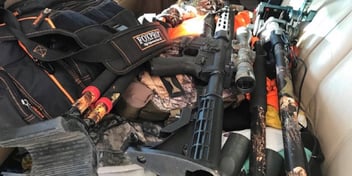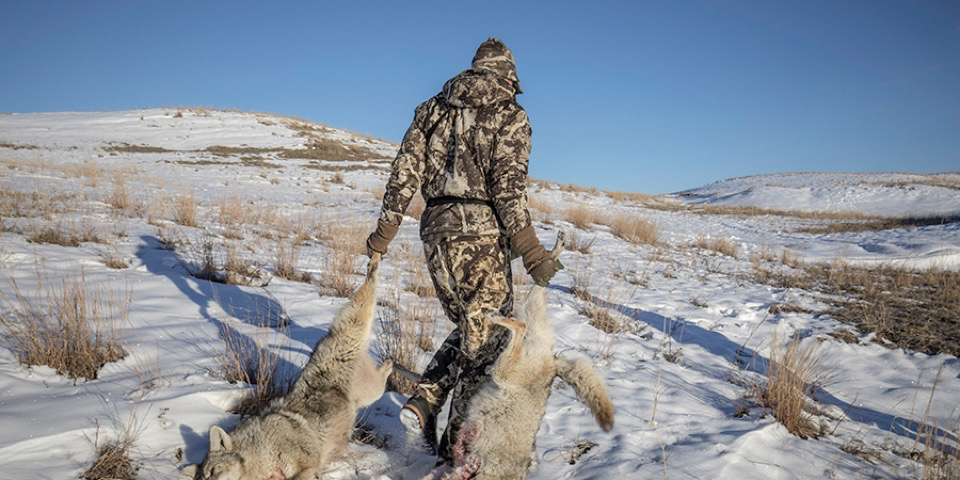
If you think about it, Coyote hunting can be year-round — certain parts of fall (depending on which part of the country you're in), late winter, early spring, and even summer. Whatever season you choose, with the right approach you can take advantage of that time to pile up the pelts. Here are eight guaranteed tips for making your hunt a success.
Go-Long Cartridges
Because I’ve hunted so much public land and am often calling fairly educated summer coyotes, especially as the season wears on, I like to have a rifle and cartridge that can deal with the long shot. It’s incredibly common, educated or not, to get dogs that hang up at 250 to 300 yards, and for that situation, if I can’t get them any closer, a good rifle and cartridge will do the trick. The .223 Remington is a stock favorite and is capable of pulling off a long shot given the right load.

I particularly like it in Mossberg’s MMR — a compact AR-style platform that’s great for walking afield and excellent for those sets where multiple dogs approach. The MMR comes with a 1:8-in. twist rate, which is essential for handling a wide variety of bullets, from smaller varmint to larger predators. A full-length Picatinny rail makes mounting optics a cakewalk, while an adjustable stock makes it a great fit for me or my smaller-statured sons.
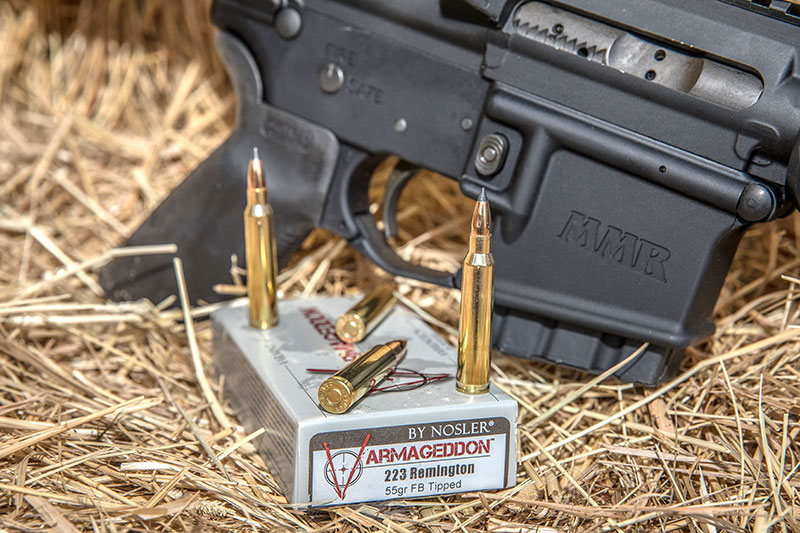
For truck gun purposes, I prefer the MVP Predator Rifle in .223 Rem., mainly because it’s a smooth-shooting bolt gun in a highly maneuverable package — it features an 18.5-in. barrel with a 13.25-inch length of pull, perfect for those snapshots. It’s easy to get in and out of the rack, and oh, by the way, it’s a tack driver.
Mossberg MVP Predator Rifle in .223 Rem.
When it’s time to go deep — and I mean way back — that’s when I dial up one of the Patriot Predator rifles in either .243 Winchester or the wildly popular 6.5 Creedmoor. Both are fully capable of the shot beyond 300 yards, though my personal favorite right now has got to be the Creedmoor. I’ve shot the cartridge out to 1,200 yards on steel and vaporized a South Dakota prairie dog at 802 yards. Needless to say, it’ll go deeper than my shooting abilities can usually take me.
The Patriot in 6.5 ways just under 7 pounds and features the amazingly crisp Lightning Bolt-Action (LBA) trigger, a necessity for long-range accuracy.
Morning & Evening
Like any animal, heat affects coyotes, too. This means your go-to times during the summer, especially when it’s rip-roaring hot, are typically going to be early morning, later afternoon/evening and at night (in states where it is legal to hunt). The other thing to do is play the weather — cooler days, stormy afternoons, overcast mornings, each will provide relief from the heat and typically brings about an uptick in coyote movement.
Water
As hunters, we so often outsmart ourselves and forget the fundamentals of animal behavior and biology. Whether you’re looking for giant velveteen bucks or an early season archery bull elk, one factor can trump all others — water. When the temperature gauge skyrockets, every animal is going to concentrate near or around water. Especially in the West, where water sources can be so limited, it’s a good idea to target watering holes and travel corridors en route to them. I will often target creek beds, small springs, and cattle ponds, especially when they’re near agricultural areas.
Cattle Call
Depending on the area of the country you’re hunting and local ranching practices, calving usually takes place sometime in the mid to late spring. As a result, coyote activity also goes into overdrive during that timeframe. I’ve talked to ranchers who’ve seen coyotes dragging calves off into the timber, which only illustrates this point: wherever there are cattle, there’s bound to be ‘yotes. Studies have shown that a higher density of coyote populations corresponds to local cattle populations, and for good reason. Not only do coyotes try to pick off calves, but they also feed on placentas and other leftovers. When I hunt Eastern Colorado, I try to find BLM land that surrounds local ranching operations, and this has proven to be highly successful.
Wind
This almost goes without saying, but I can’t tell you how many folks I’ve hunted with who completely forget to play the wind. It doesn’t really matter what camo you bring or how good you are at working a mouth call if you get busted by a weary ‘yote, likely before you ever see him. Recognize, too, the fact that wind on hilly or mountainous slopes changes late morning and early afternoon, so you have to anticipate not just which direction the wind is blowing right now, but when you’re going to be set up.
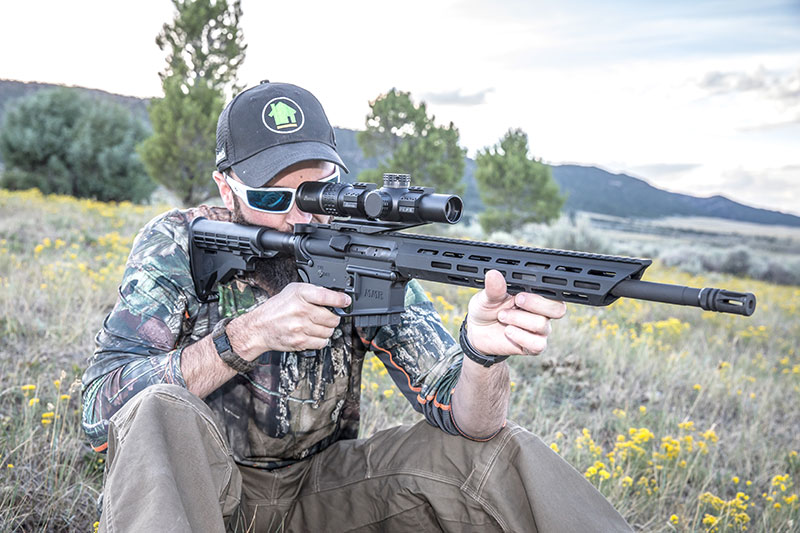
Eric Conn set up with his Mossberg MMR
a Little Mud on the Tires
Sitting and calling definitely has their place, but I also like to mix in a dose of midday driving around vast stretches of farmland and BLM country. Especially when haying season starts, there’s fresh-cut grass and a better view of the wide variety of rodents running through the fields. Again, if you can spot hayfields rich with Rodentia — and assuming you have permission to hunt — there’s likely to be a group of coyotes prowling nearby. I’ve killed a lot of coyotes driving around dirt roads, enjoying the AC, and supposedly just killing time.
Varmint Eaters
Speaking of small game, certain parts of the country are thick with prairie dogs, ground squirrels, rabbits, and other critters of like nature. If you can locate a good-sized colony, you’ve likely also found the dinner table for a group of local predators. I’ve burned many an afternoon — and several boxes of shells — picking off ground squirrels, only to realize later that several dogs had swooped in for a late afternoon snack. These are generally good areas to target, especially when the weather cools.
Call ‘Em In
As with any season, calling works in the summertime, albeit with sometimes different strategies. Because there’s usually more available food, and thus less reason to come to a distress call, many times I’ve found the coyote vocals band on my FoxPro Inferno to be particularly useful. Pup distress calls can also be highly effective, and I try not to leave a set without at least giving that a try for several minutes. The other thing that can be useful, especially if you’re in a thick deer or cattle area, is fawn or calf distress calls. The only time that backfired on me was when an entire herd of angry mama cows came barreling down on my position — only further proof that electronic calls really do work.
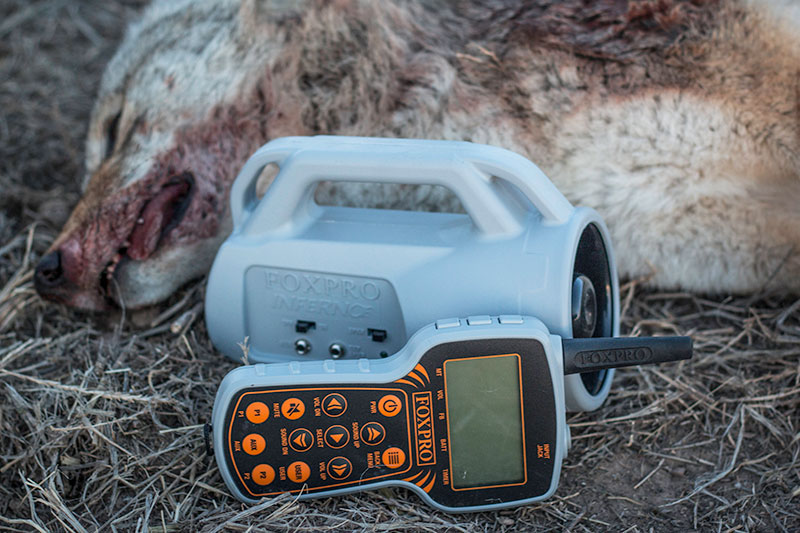
About the Author





